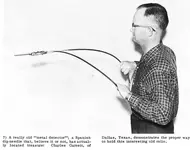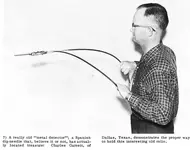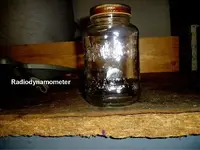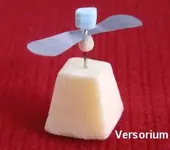dowser 501
Full Member
Re: Spanish Dip Needles - Miner's Compass
Art, in reference to your post #9 the whole of this thread is on the wrong track. With real time dowsing such an irregular event, all these different inventions are attempts to create dowsing conditions. If by some chance a product for dowsing was put on the market at a time when dowsing conditions prevailed, the name of that product would for many years have a reputation that it did not deserve, and as dowsing conditions waned, so would the sales of these dowsing toys.
Sometime in the (hopefully) near future if dowsing conditions reappear, owners of these useless dowsing gadgets will again swear by them, ( too many to name) although a pair of coat hangers at that moment in time would also be working with the same proficiency.
There is only one item that can be used in dowsing. Your brain.
Max
Art, in reference to your post #9 the whole of this thread is on the wrong track. With real time dowsing such an irregular event, all these different inventions are attempts to create dowsing conditions. If by some chance a product for dowsing was put on the market at a time when dowsing conditions prevailed, the name of that product would for many years have a reputation that it did not deserve, and as dowsing conditions waned, so would the sales of these dowsing toys.
Sometime in the (hopefully) near future if dowsing conditions reappear, owners of these useless dowsing gadgets will again swear by them, ( too many to name) although a pair of coat hangers at that moment in time would also be working with the same proficiency.
There is only one item that can be used in dowsing. Your brain.
Max




 "Gold Fever" is in-curable, only can "treat the symptoms"!
"Gold Fever" is in-curable, only can "treat the symptoms"!  I have to ask my friend Real de Tayopa, what the correct term for "silver fever" is - (hee hee!) I know a guy CAN come down with BOTH "diseases"!!!
I have to ask my friend Real de Tayopa, what the correct term for "silver fever" is - (hee hee!) I know a guy CAN come down with BOTH "diseases"!!! 



 Thank you all for the replies and information, I hope you all find the treasures that you seek.
Thank you all for the replies and information, I hope you all find the treasures that you seek.